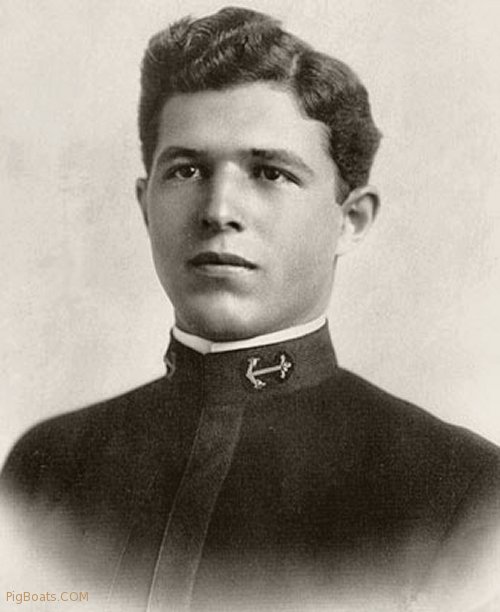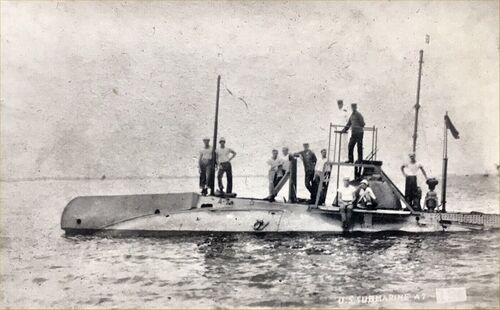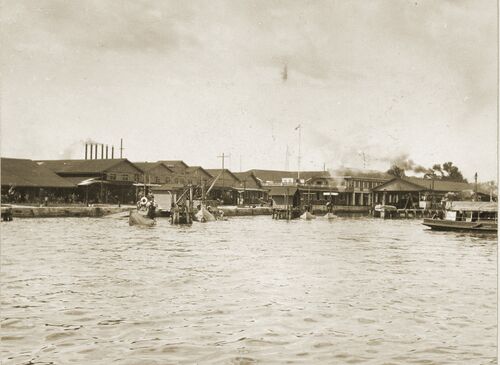Marcus
Lt jg Arnold Marcus

Arnold Marcus, Jr was born on June, 26, 1892 to a mother, Lillian, who, through her fathers line, traced her linage back to Thomas Becket and a father, Arnold Marcus, who was 25 years her senior and a prominent banker in the greater New York metropolitan area with interests in banking, investment companies and railroads. He represented the Rothschild family investments during the Tammany Hall scandals.
Arnold Sr. died in 1905 leaving the family very well provided for. Arnold Jr. was educated for the most part in Germany. His mother loved to travel and took him with her. After the death of Arnold Sr. the widowed Mrs. Marcus had ambitions of marrying into English nobility and ended up marrying Lieutenant Colonel Sir Frank Popham Young three years later, who was involved with the governing of India. Young Midshipman Arnold Marcus was the best man.
At age 10 Arnold Jr. is mentioned along with his mother in the society pages as to attending social events in the summer of 1902 at Newport with many other 'moneyed' families.
At age 15 he had apparently completed his over-seas education and was attending a 'preparatory' school in advance of taking the Naval Academy entrance exams. He was to graduate from the Academy with the class of 1913.
His first duty station as a Midshipman was aboard the armored cruiser USS Pittsburgh (Armored Cruiser No. 4). In 1914 he was detached from the Pittsburgh, to duty on Asiatic station. He was to take an army transport ship to the Philippines on May 6, 1914.
While aboard the Pittsburgh he met his future wife, Miss Helen Elizabeth Cowles, daughter of Mr. and Mrs. Paul Cowles, a prominent family of Chicago. They met while she was visiting family in San Francisco and he was in that port on temporary duty from his ship that had been off the Mexican Pacific coast during the Vera Cruz landings.
Helen and her parents travelled to Hawaii together and then Helen travelled to the Philippines alone to marry Arnold there since he couldn't get leave. Her parents were cruising to the Orient on their honeymoon as her father had just remarried. Helen and Arnold were married in Manila in the summer of 1915. She made several trips back to Hawaii and California during the next two years.
After arriving in the Philippines, on September 5, 1914 he was assigned to the USS Pampanga (PG-39), a schooner rigged gunboat built by the Spanish Navy and captured in 1898. She retained her Spanish name. In her lifetime she was commissioned and decommissioned by the U.S. Navy four times. On June 2, 1915 Marcus was detached from the Pampanga, to temporary duty on the armored cruiser USS Saratoga (Armored Cruiser No. 2), the former USS New York.
On July 2, 1915 he was then transferred to the gunboat USS Helena (PG-9) from the Saratoga. He remained there until July 16, 1916 when he was transfered to the USS Monadnock (BM-3), an iron‑hulled, twin‑screw, double‑turreted monitor of the Amphitrite class which saw service in the Spanish-American War.
On August 29, 1916 he was commissioned a Lieutenant Junior Grade, retroactive to June 7, 1916.

In the early spring of 1917 Marcus was ordered to command of the USS A-7 (Submarine No. 8).
On July 24, 1917 Marcus and his crew were running drills with the A-7 on Manila Bay when the submarine suffered an explosion. The A-7 was commissioned in 1902 and had a gasoline engine. Her engine had been overhauled a short time before this trip. Fumes were always a problem and some vapors had settled in a bilge pocket and built up. When a electrical switch was thrown there was a spark and an explosion occurred causing severe burns and setting the interior on fire. Marcus and his men battled the blaze until he ordered the crew topside and into the boats that had been summoned alongside. Marcus was the last man to emerge from the interior of the crippled submersible, he sent up distress signals to the nearby monitor Monadnock and then took the helm himself in an attempt to beach the submarine.
He refused all attempts of personal assistance until all his men were removed from the A-7. One had died almost at once from the blast; seven later died in the hospital from complications as a result of their burns and two others survived, although severely burned. Once all his crew were off the submarine he finally submitted to being taken from the vessel for treatment. He died the next day.
Ultimately all the bodies of the men who died from the explosion on the A-7 were shipped to the United States for burial.
The dead were: Lt jg Arnold Marcus Jr, of Mill Valley, Cal. died the next day in the Canacao Naval Hospital, July 25, 1917. Buried at Arlington National Cemetery Plot: Section E Div Site 3808.
Jesse Mellon Currie, Chief Electrician, he also died the next day in the Canacao Naval Hospital, July 25, 1917. Buried in Oakwood Cemetery in his hometown Richmond, Virginia.
Ira Dell Hixon, Machinist's Mate, Second Class, from Yakima, Wash., also died the next day in the Canacao Naval Hospital, July 25, 1917. Buried; Tahoma Cemetery, Yakima, Washington. Plot: F 16 NW 2
Otho George Hopewell, Gunner's Mate, Second Class, of Brushy Knob, Mo. likewise died the next day in the Canacao Naval Hospital, July 25, 1917. Buried in Brushy Knob Cemetery in Vera Cruz, Missouri.
Arthur Martin Jacobs, Fireman Second Class, lived until August 1, 1917. Buried, Mare Island Cemetery, Vallejo, California. Plot: Section E, Row 02, Plot 614.
Joseph Anthony Kunz, Machinist's Mate, First Class, from Cameron, Texas, died the next day in the Canacao Naval Hospital July 25, 1917. Buried in Clark Veterans Cemetery, Angeles, Pampanga Province, Central Luzon, Philippines.
Harold Holden Lang, Machinist's Mate, First Class, of Dorchester, Mass. died the next day in the Canacao Naval Hospital, July 25, 1917. Buried, Mountain View Cemetery, Cambridge, Vermont.
Theodore Schaiblin, Chief Electrician, home town of Greenwood, Mo., survived until Aug. 5, 1917. Buried, Mare Island Cemetery, Vallejo, California. Plot: Section E, Row 02, Plot 611.
The survivors were; Fireman Arthur M. Jacobs of Rigby, Idaho and J. P. Nixon, Machinist's Mate. Nixon was only slightly injured. All who died did so because of extensive burns that covered their bodies. Where the survivors went after the explosion isn't known at this time.
These were the very first major operational losses to the US Submarine Service, though the submarine survived, it was never operational again.

Cavite, Philippines c1917
Arnold Marcus was buried with full military honors at 3:00 PM on October 10, 1917. The service was conducted by Navy Chaplin Roundtree at the chapel at Arlington Cemetery. His wife, Helen Marcus, had accompanied her husbands body on the long trip from Manila to Washington, DC.
On August 22,1919 the destroyer USS Marcus (DD-321) was commissioned in memory of Arnold Marcus Jr. and sponsored by his widow, Helen Cowles Marcus. His mother, Lady Young, was also present.
Secretary of the Navy, Josephus Daniels wrote a letter to the widow Marcus and stated in it; The conduct of your husband was that of a most gallant officer, who, though fatally Injured, without regard to self, devoted every action and thought to the care of his vessel and men.
Arnold Marcus Jr was awarded the Navy Cross for his World War 1 service.
Thanks to James Haas for additional information.
Page created by:
Ric Hedman & David Johnston
1999 - 2023 - PigBoats.COM©
Mountlake Terrace, WA, Norfolk, VA
webmaster at pigboats dot com
